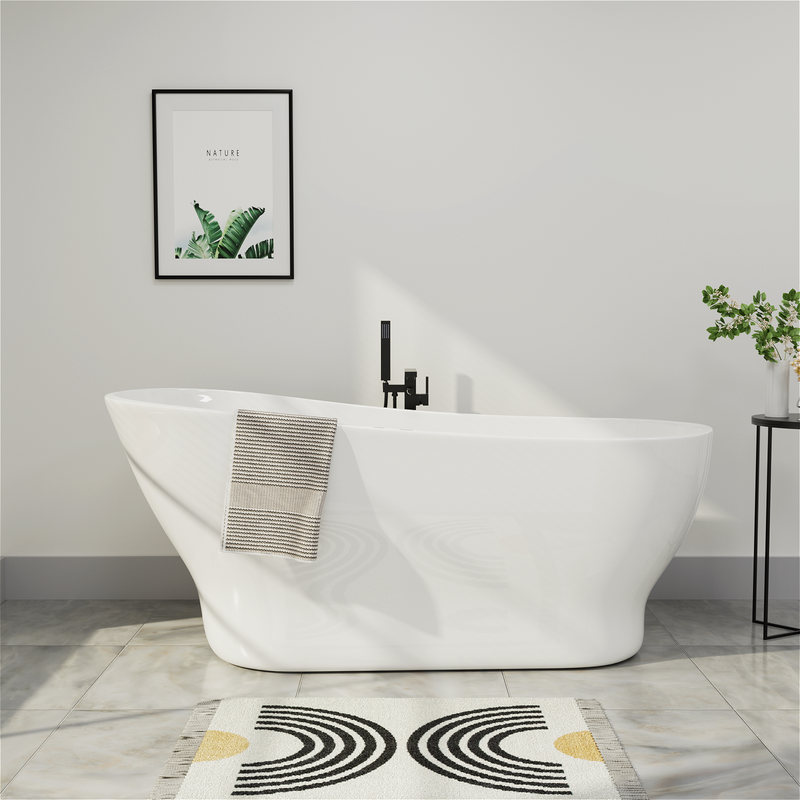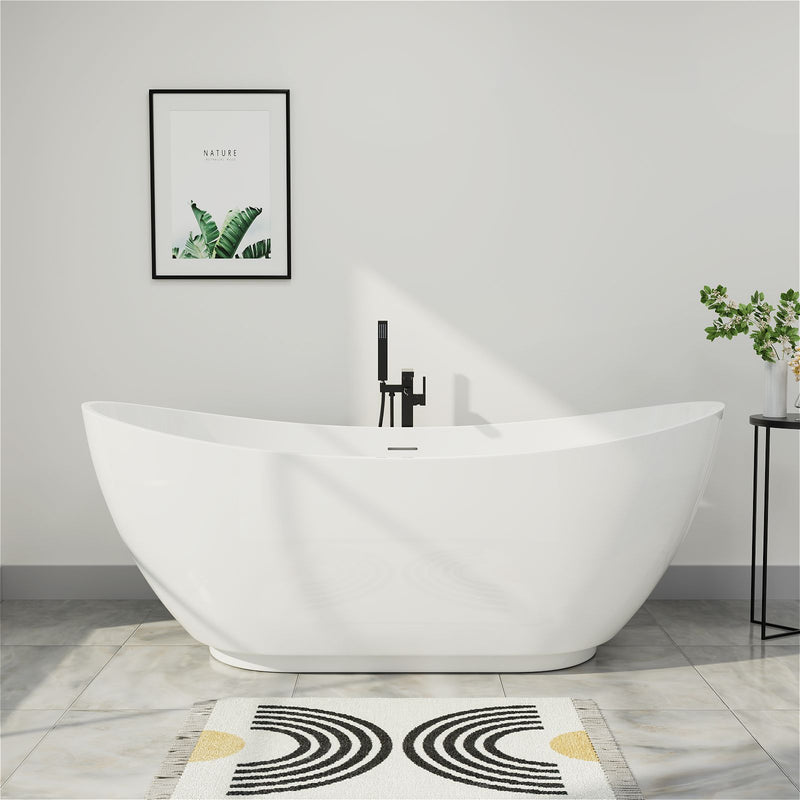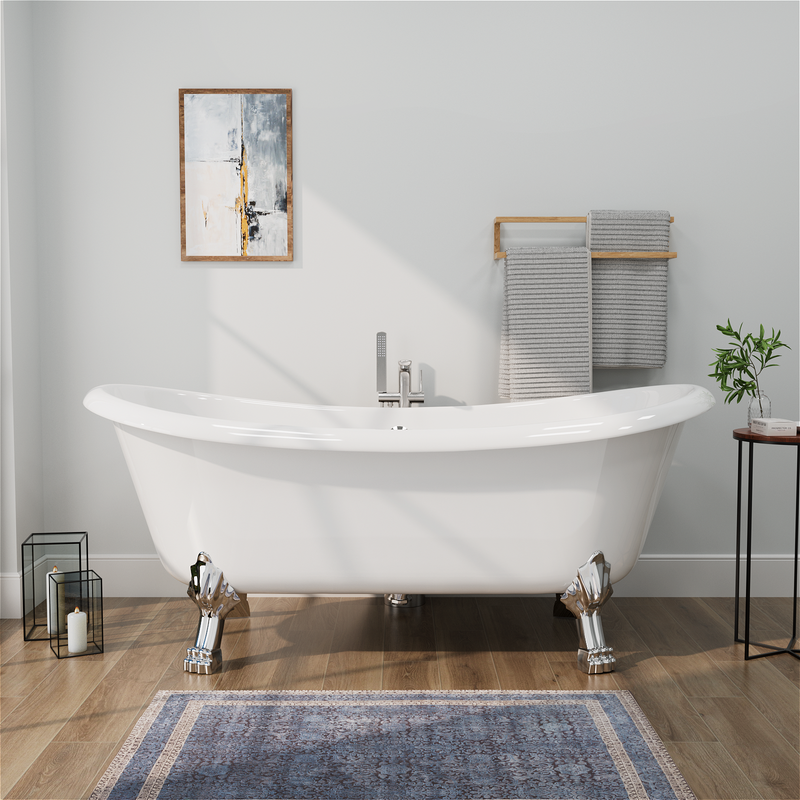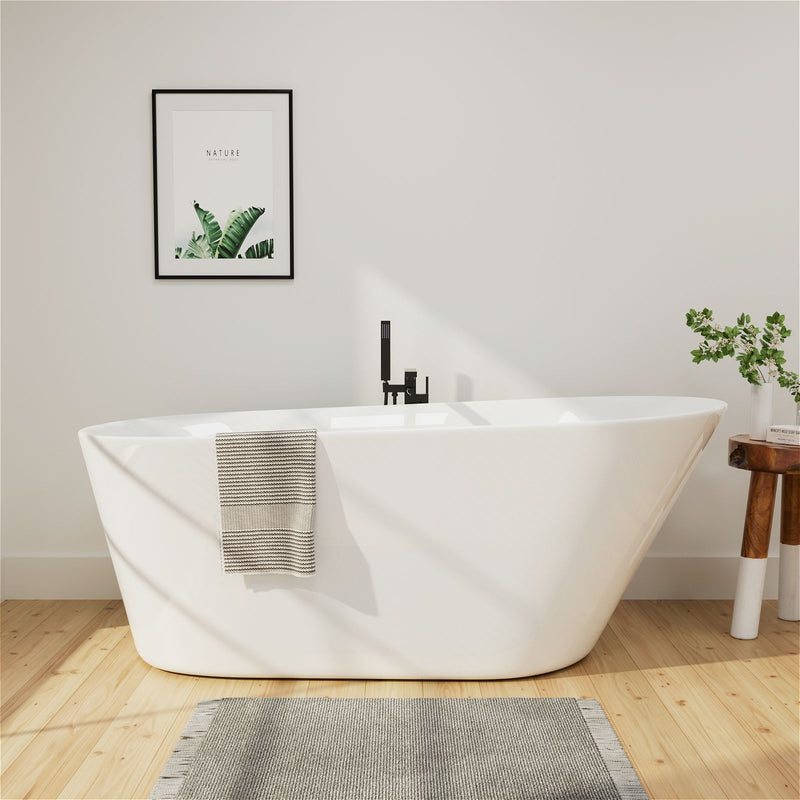If your tub's caulking is showing signs of wear and tear - becoming brittle, cracked, and discolored - it's important to address the problem before water damage becomes too severe. Fortunately, with a little knowledge on how to caulk a tub, you don't have to call in a professional. Use this guide to keep your tub clean, fresh, and mold-free.
What is Caulk?
Caulk is a general term for a variety of sealants, including silicone, latex, and acrylic. Typically, caulk is applied the same way as sealants - using a caulking gun to patch tub cracks or join surfaces. The advantage of caulk is that it's easy to apply and remove, making it recommended for many outdoor projects. The final advantage of caulk is that it can be painted on, giving the bathroom a more seamless look.
Advantages and Disadvantages of Caulk
The main advantages of caulk are its cost and ease of application. Compared to sealants, caulk is cheaper and easier to apply. This is one of the reasons why people choose caulk for most outdoor projects. Another advantage of caulk is that the material is widely available.
However, the main disadvantage of caulk is its high hardness. After use, caulk hardens over time, which reduces its water-resistant properties. Additionally, caulk can't handle high temperatures and breaks down easily, making the surface susceptible to water stains and other structural issues.
The Importance of Bathtub Caulking

When water gets into a bathtub, it creates a warm, moist environment that's perfect for mold growth. Soon, you may find your bathroom filled with a musty smell that won't go away no matter how hard you clean it. When water gets into these narrow gaps, it can also damage wood, drywall, and insulation.
It's difficult to completely remove mold or repair any damage because the problem is behind a tile wall or under a bathtub. So if you notice old caulk showing signs of wear, such as discoloration or cracking, it's best to replace it immediately.
Choosing the Right Bathroom Caulk
Don't just buy the caulk you see on the shelf at the hardware store. Not all caulk is designed for the moist environment of a shower or bathtub. Look for products labeled for bathroom use and find a caulk that's mold-resistant, waterproof, and designed specifically for sealing shower and bathtub gaps.
Generally speaking, bathroom caulks fall into two categories: silicone and latex. Silicone is a better moisture-resistant option, but latex caulks are easier to work with. Many DIY enthusiasts choose latex caulks to ensure that the gaps are effectively filled and the finished product looks beautiful. You can also find caulk products that mix silicone and latex together to make siliconized latex caulks, which are strong and easy to work with.
How to Caulk a Bathtub
Step1 Gather All Tools and Materials
You need to make sure everything you need for the project is ready beforehand. The last thing you want to happen is to stop halfway because you forgot something.
Plastic Scraper/Utility Knife: Make sure its blade is plastic to avoid damaging the bathtub.
Vacuum Cleaner: You need a vacuum cleaner with a hose attachment.
Painter's Tape: The width of the tape should be at least two inches or wider.
Caulking Gun: Unless you have a pre-filled tube, you need this tool to apply the caulk.
Caulk: You need caulk for bathroom bathtubs and tiles. Choose acrylic caulk for ceramic tubs and silicone caulk for other tub materials.
Sponge/Cleaning Rag/Paper Towel: These are needed to clean up after removing the old caulk and putting the finishing touches on the new caulk.
Rubbing Alcohol: This helps clean and remove small pieces of old caulk.
Chlorine Bleach: If you have mold in your caulk, you will need to treat the area with bleach before applying new caulk.
Caulk Removal Tool: This special tool can be helpful if the caulk is difficult to remove.
Step 2 Remove the Old Caulk
Start by scraping off the old caulk with a plastic scraper. If you chose a utility knife, you can use it to separate the caulk from the tub and wall before scraping it off with the caulk removal tool.
Once you have thoroughly cleaned around the tub, remove any large pieces of old caulk and discard them. Vacuum the area around the tub. Run your hand over it and do a final check to make sure you didn't miss any of the old caulk. If there's still caulk to remove, be sure to vacuum around the tub once you're done.
If there's mold in your tub, you'll need to mix a half cup of chlorine bleach with a gallon of cold water. Use a sponge or rag to thoroughly scrub the area around the tub where the caulk was. Let it dry overnight.
Next, wipe down the area where the old caulk was with rubbing alcohol and a sponge or rag. You'll also need to use alcohol on the walls and tub. This will help prepare the surface and ensure that the new caulk will adhere securely and seal.
Step 3 Choose and Prepare the Right Caulk
Now that your surfaces are prepped, let's talk about caulk selection. You may have noticed that the caulk aisle at the home improvement store is filled with a plethora of options. But don't worry - it's easier than it looks.
Types of Caulk
When working in high-humidity areas like tubs or showers, you'll want to use a caulk specifically formulated for kitchens and bathrooms. Why? Because these formulas are designed to resist mold, which is exactly the protection you need in warm, humid environments. Quality kitchen and bathroom caulk is usually silicone-based or made with a high-quality latex-silicone blend. It'll be clearly labeled on the product packaging that it's mildew-resistant, so keep an eye out for it.
Color Considerations
Most people choose white caulk for bathtubs, and that's definitely a good choice. White generally matches most bathtubs and shower enclosures, as well as classic white bathroom tiles. However, if your bathroom has colored or dark tile (like a cool rainbow-colored stripe around the top), you may want to consider using clear caulk in those areas. This will avoid weird contrast lines and make everything blend more naturally. If your tile and bathtub have unique finishes, you can even find caulk in almond, beige, and other neutral tones.
Preparing the Tube of Caulk
Once you've chosen your caulk, the next step is to prepare it correctly. It may sound simple, but how you cut the tip of the caulk tube is crucial. Grab your caulk gun - many come with a cutting tool - and snip the tip of the caulk tube at a 45-degree angle. Start small. If you find that the caulk isn't flowing out enough, you can cut the opening a little larger. If you cut it too large at the beginning, it will get stuck and it will be difficult to control the amount of caulk flowing out.
After cutting off the tip of the gun, use the built-in poker (usually located on the side of the gun body) to puncture the inner seal of the caulk tube. If the caulk tube is older and has some dried caulk in it, this step can clean out the new caulk and allow the new caulk to flow out smoothly.
Step 4 Applying Caulk
Now we get to the fun part - actually applying the caulk. If you haven't applied caulk before, you may be a little nervous, but relax! Remember, if you make a mistake, you can wipe it off and try again. As long as you deal with the mistake before the caulk dries, it will be easy to accept.
Angle and Speed are Important
Hold the caulk gun at about a 45-degree angle to the surface. This angle helps control the flow and ensure that the caulk is pushed accurately into the seam between the tub and the tile. Move the caulk gun smoothly along the seam. Don't rush; an even, even pace gives you better control. Going too fast may leave gaps or weak spots. Going too slow may leave thick, messy seams. Don't get discouraged if your first application doesn't turn out well. You can always wipe it clean and try again.

Tackle Corners and Odd Angles
Corners are notoriously troublesome for new caulkers. My personal strategy is to start in the corners and work outward. That way, you can apply a little more caulk where the two lines meet and then smooth it out with your fingers or a finishing tool. If you start in the middle and work your way to the corners, your arm and caulk gun may not be enough, causing you to apply caulk at odd angles and end up with a mess.
Methodically caulk around the entire tub. If the tub is installed in a shower, be sure to apply a bead of caulk to the corners where the tub meets the wall, especially if it's tiled. Also, don't forget where the front of the tub meets the floor. If there's a crack or missing caulk along that seam, water could seep under the tub and cause damage over time.
Adapt to Different Surfaces
The texture or height on the tile or molding may vary as you go. Just keep squeezing the trigger and holding the 45-degree angle. Adjust your speed slightly if you need to push more product into a deeper gap, and pull back if the space gets narrower.
Step 5 Trim and Smooth the Caulk
Once the caulk is laid, it's time to make it look flawless. Finishing the caulk makes an otherwise okay job look professional.
Tool Choice
There are several ways to smooth out caulk gaps. If your caulking gun has a trimming tool built into it (some have a small angled piece of plastic on the end), you can use it to smear along the caulk gap to create a clean, even line. This tool is especially handy when working along straight surfaces, such as baseboards or window frames.
When it comes to bathtubs, shower corners, and uneven tile, I personally like to use my fingers. This way you can feel the contours of the surface and apply just the right amount of pressure. Before you apply caulk with your fingers, keep some paper towels nearby. Since your fingers will pick up quite a bit of caulk, you'll need to wipe off any excess as you go. Use a slow and steady application with your fingers, pressing gently. If you notice any uneven spots or gaps, simply apply a little more caulk and smooth it out again.
Never Let It Dry Before You Finish
Always smooth and finish the caulk while it's still wet enough to work with. If you wait too long - say, walk away after applying all the caulk - the caulk may start to crust over and you won't end up with the smooth finish you want. It's best to do this area by area. Apply the caulk in one even layer, then smooth it out immediately.
Step 6 Dry, Cure, and Clean Up
Congratulations! You finally have a clean, clear layer of caulk around your bathtub. But it's not done yet. You'll need to let it dry and cure, following the product's instructions.
Follow the Manufacturer's Instructions
Some caulks claim to be ready for use in the shower in just 30 minutes. Others may take several hours or even overnight to fully cure. Always read the label on the caulk tube and follow the instructions. Don't rush it - if you jump in the shower or set up the tub too soon, it could wash away or stain the caulk before it cures.
Storing Leftover Caulk
If there's any caulk left in the tube, don't throw it away. You can keep it fresh for later use by covering the mouth of the caulk tube with a small piece of plastic wrap or a suitable tube cap (sometimes included with the product). Remember that once the caulk is opened, the inside of the tube will begin to harden over time, so try to use it up in a reasonable amount of time. If you're a frequent home improvement professional, it's handy to have a used tube of caulk on hand.
Final Inspection
Once the caulk has fully cured, take a moment to inspect it. Check for any small gaps, lumps, or spots that you may have missed. Don't panic if you find anything that bothers you. You can always cut off that small piece and reapply the caulk. The great thing about caulking is that it's a very forgiving process. With a little time and patience, you can get a result that looks great.
FAQs About Tub Caulking
How often should I re-caulk my tub?
Caulk wears out over time, especially if the bathroom is poorly ventilated or gets heavy use. If the caulk in your tub starts to crack, peel, or mold, replace it immediately. Otherwise, it's recommended to replace the caulk at least every 5 years (even if it's not showing signs of wear).
What happens if the caulk gets wet?
Caulk is not waterproof. This means that when it gets wet, it loses its adhesive properties, exposing the surface to water and other structural damage. The only way to fix this is to re-caulk with a better caulk, such as latex or acrylic caulk.
Do I need to fill the tub with water when applying caulk?
It's not absolutely necessary, but many DIYers swear by this technique, especially when using regular latex caulk, which is less flexible. The idea is that if you fill the tub with water, the weight of the water will expand the tub and pull it down. If you leave the water in the tub until the caulk cures, the caulk will set along with the expanding tub, keeping it in a lower position without cracking or falling out. To be honest, if you have a cast iron tub, it's unlikely that the tub's shape and position will change due to the weight of the water. Fiberglass, acrylic, or thin metal tubs may change, but silicone caulk or a latex and silicone mix is usually flexible enough to handle such minor changes.





